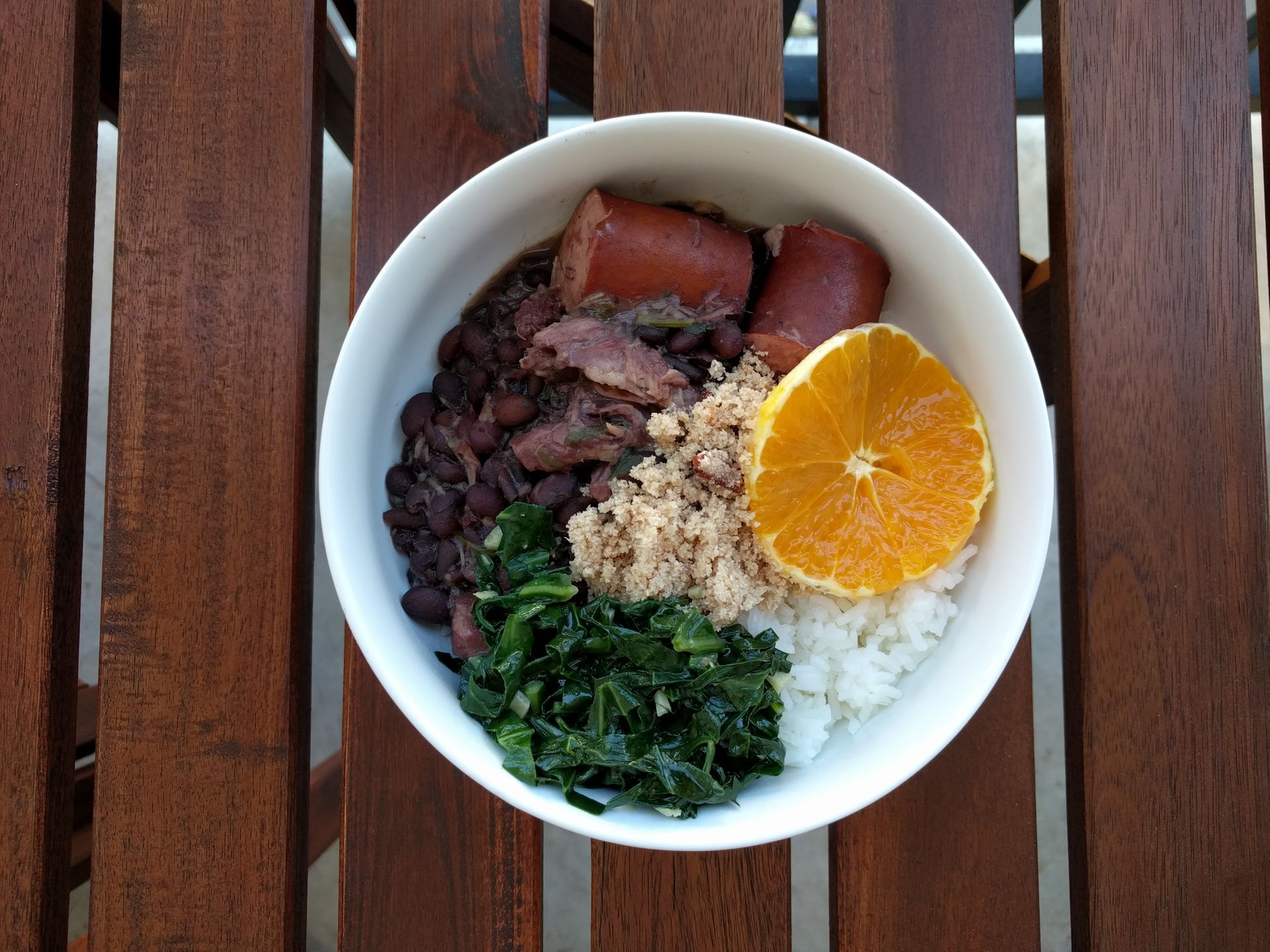Which dish immediately teleports you home? For me it’s Feijoada. When I try to explain it to people, I often say: “it’s like borrowing happiness from the future.” This hearty stew of black beans is what I think about as “the food of my people.”
Have you ever thought about how hard it is to describe any of the senses using a different one? How do you explain colors when you can’t see? How do you describe flavors when you can’t taste? How do you express a scent with words?
This is my attempt to try to make you feel what this delectable dish represents for me.
In a loose comparison, the same way you can have different types of pizzas, you can have different types of Feijoada. I will try to describe the one with which I’m most familiar, the Feijoada à brasileira.
This by no means purports to be a full recipe. Or worse yet, I would never put you through lengthy paragraphs of history so you can finally find the recipe at the end of this article. As I recently heard someone say: “I’m really sorry about the break-up Carla; but how many eggs do I need again?”.
The earliest memory I have of this dish was when my father would religiously order it on Saturdays, from this small family restaurant that was close to our home. The back of this house was packed with a bunch of bustling Brazilian grandmas cooking for the Feijoada-hangry crowd; I’m not sure how common it is to eat certain dishes on a particular day of the week in other countries, but in Brazil it’s very common to eat Feijoada on Wednesdays and/or Saturdays.
I remember being in line with my dad, holding a plastic bag full of empty tupperware, patiently waiting our turn. Just standing there, with the buzz of chatter surrounding me, I would watch him getting caught up on the neighborhood gossip while my stomach was grumbling. It was a sharing moment for everyone.
Feijoada is a very rich dish. There’s a lot going on that I will get to and make your mouth water.
But more than a dish, it’s traditionally devoured at social gatherings. If you can relate, it’s the kind of heartwarming food that brings families and friends together, while chatting for hours and hours. You can find it being consumed across all social classes. It’s intrinsically rooted in our Brazilian culture.
Chop chop chop. As we get closer to the kitchen, we could hear the kitchen staff going crazy, preparing all the vegetables, cutting all the different meats that go into the dish. At that point, the sizzling sound is the most satisfying sound you can ever experience. It happens when the meats graciously touch the cast iron, releasing its magical aroma into the air. From afar, I was able to see the pot full of beans, accompanied by this constant “blurp, blurp, blurp” - an invitation to bring it to my belly.
Cooking for hours, the beans dance with thick pieces of bacon to increase the flavor. Some say the special ingredient is the, not one but, two bay leaves for the subtle black pepper-ish-like taste. Yummy!
The fragrant freshly cooked white rice is a must. Onion and garlic raise its flavor to a new level; these are the real culprits making the mouthwatering smell travel streets away.
There’s more. Much more. You will notice next this sizzling in the back of the stove. What’s in there? Oh, of course. It’s the pork chop, covered in succulent fat, filling the kitchen with this appetizing smoke flavor.
“No vegetables?” you ask. I got you covered with collard greens. In this beautiful arrangement with more garlic and bacon, all heated in delicate olive oil until it becomes this bright green delish.
Once finally at the kitchen, we would give our tupperware to the cooks and they would fill them with the most delicious and perfumy Feijoada.
And that’s what I mean when I say eating Feijoada is borrowing happiness from the future. It’s a heavy and hearty meal that requires time to digest; but a nap is highly encouraged.
The whole experience is what makes it so extraordinary and special. Memories of having this dish is always accompanied by great moments with family and friends.
And then, dad and I, we would walk back home, carrying pounds of food, feeling like our mission was accomplished.
But anyways, let's start with the recipe...
